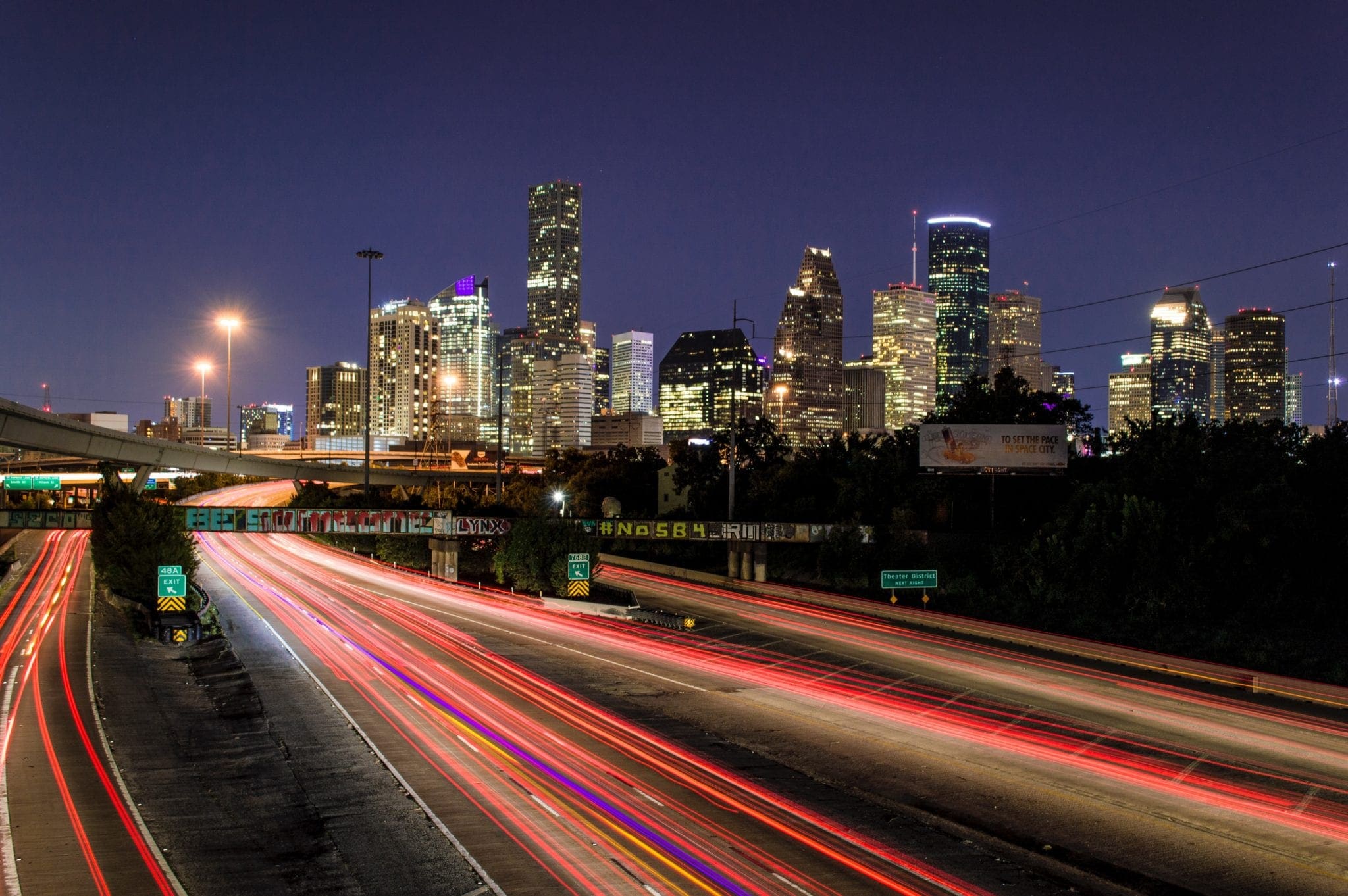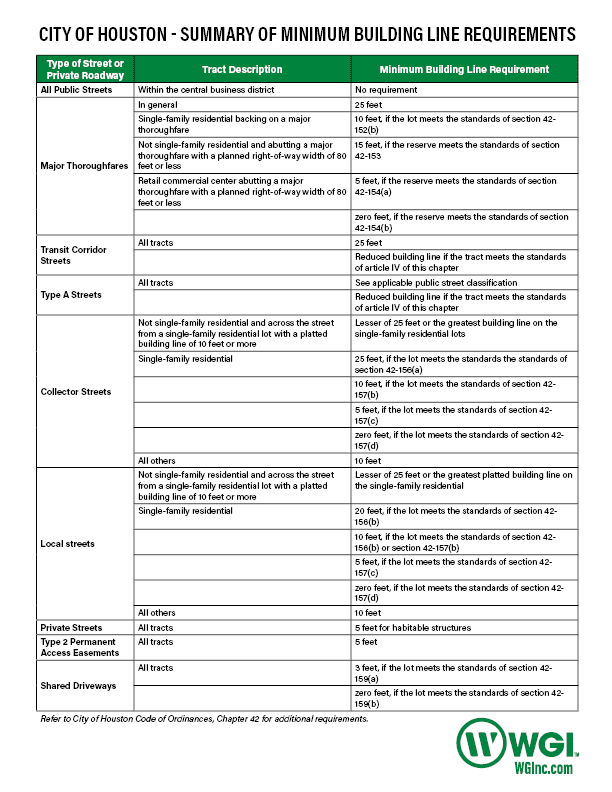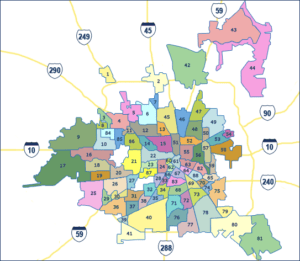
WGI Welcomes Five New Hires
WGI is pleased to welcome five new hires in our San Antonio, Austin, Houston, Dallas, and Jacksonville offices.
Learn from award-winning professionals — explore our whitepapers, blogs, and the latest industry updates.
Join our dynamic organization of engineers, land surveyors, landscape architects, environmental scientists, and architects!
Talk to a market leader today! We’ll answer any questions you have about our professional services.

Building Setbacks, or Building Lines, are a common mechanism used by many jurisdictions to control how close buildings may be constructed to property lines. Building setbacks may be placed on all sides of the property but are typically most restrictive along the “Front” and “Rear” property lines of a lot.
Most jurisdictions typically enforce building setbacks through their zoning ordinance as different zoning areas will have different setback requirements associated with them. However, there is no adopted, City-wide, Zoning Ordinance within the City of Houston Full Purpose Jurisdiction but building lines for new developments must still be regulated.
Typically, within the City of Houston, building lines are included and enforced during the platting process. Chapter 42, Section 42-150 of the City of Houston Code of Ordinances provides a detailed description of the building setback requirements for all new plats. In general, the size of the setback heavily depends on the proposed use (single family vs commercial) and the Classification of the Street adjacent to the property line. The classification of the roadway may be found by using the City of Houston Public Works & Engineering’s GIMS Application Portal. It should also be noted within the City of Houston, setbacks dimensions are measured starting at the property line (not back of curb, not centerline of street, etc).

Based on the criteria above, the general building line may be easily found for any new project. However, additional sections of code need to be reviewed as they may help reduce, or remove, proposed setbacks, or may unfortunately make the setbacks more restrictive. Section 42-151 provides a number of Exceptions to the building line requirement. If your site is adjacent to a Major Thoroughfare (again, may be determined using GIMS mentioned above) you will need to refer to Section 42-152 titled, “Building Line Requirement along Major Thoroughfares.”
Within the City of Houston, it is also always important to review a current Title Report for the subject site to insure there are no deed restrictions on the site which may require more restrictive building lines than the ones outlined in Chapter 42 above.

WGI is a national design and professional services firm leading in technology-based solutions for the construction of public infrastructure and real estate development. At WGI, we’re providing Tomorrow’s Infrastructure Solutions Today.

WGI is pleased to welcome five new hires in our San Antonio, Austin, Houston, Dallas, and Jacksonville offices.

Take a walk (and dive 🤿) with Amanda Montgomery as she gives us a glimpse into what a day in the life of an Environmental Scientist looks like at WGI.

We’re refreshing our brand to reflect the energy, inspiration, and excitement that we feel when we come to work every day.

Residents are encouraged to work together to identify, plan, and set priorities to address the needs and concerns of their community.

Creativity is required to serve the “Tenant of Tomorrow” as their needs will likely change as more employees work from home, at least part of the time.

WGI has been in overdrive for the first three quarters of 2019, exceeding 2018 in the expansion of its employees, services, clients, and geographic footprint.
You’ve been searching for a place like WGI. We look forward to meeting you soon.
Sign up to receive emails to hear our latest news and achievements in our monthly newsletter.
Enter your zip code, and we’ll personalize your experience with local projects, office locations, team members, and more.
WGI supports its associates with meaningful opportunities for growth, strong benefits and perks, while we work collaboratively with clients and co-consultants to shape and improve communities.






WGI is a dynamic organization with opportunities nationwide for engineers, land surveyors, landscape architects, environmental scientists, and architects.